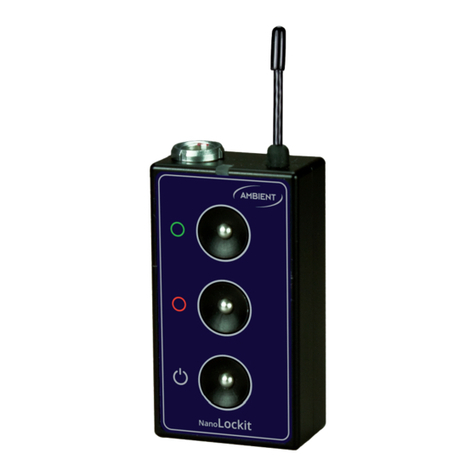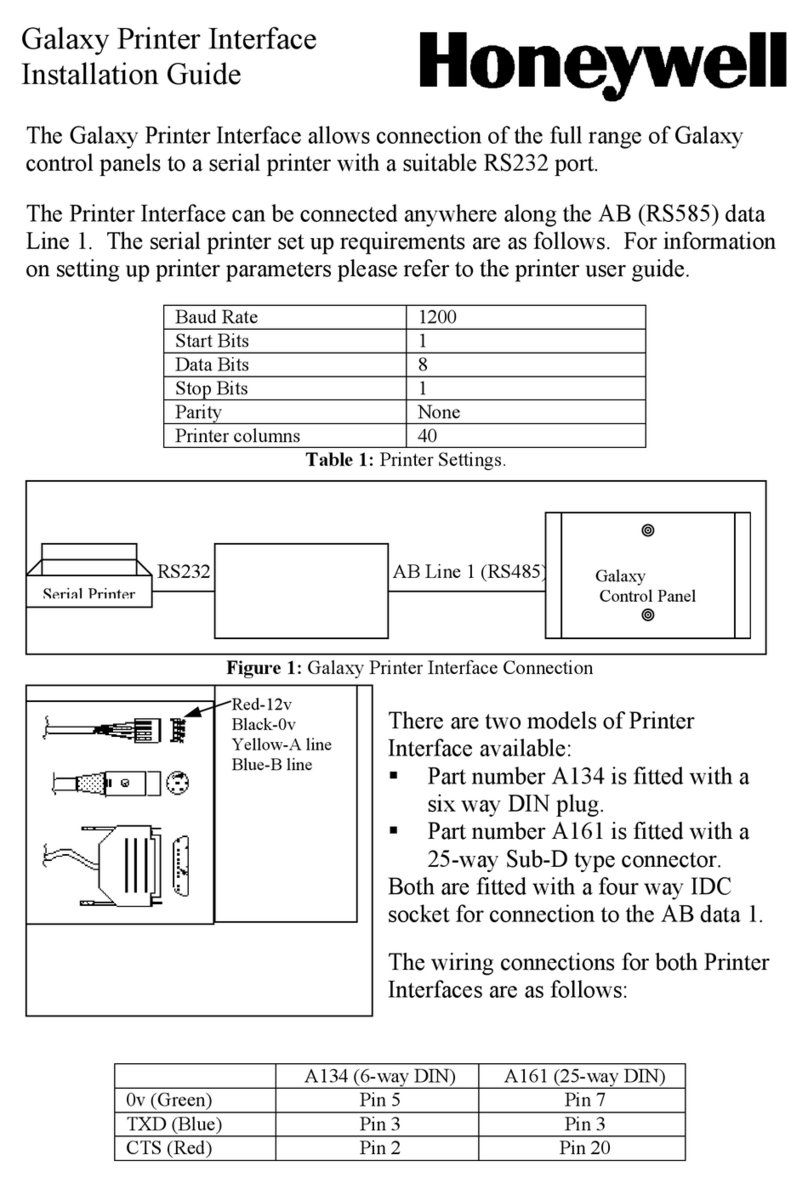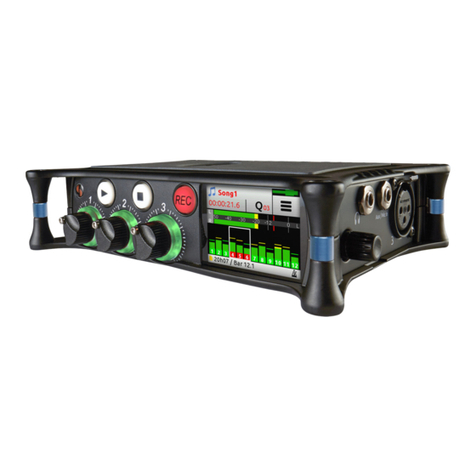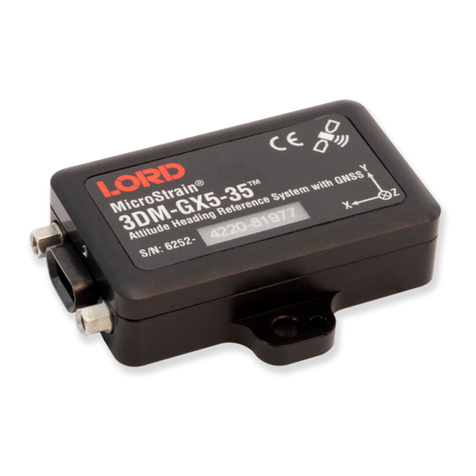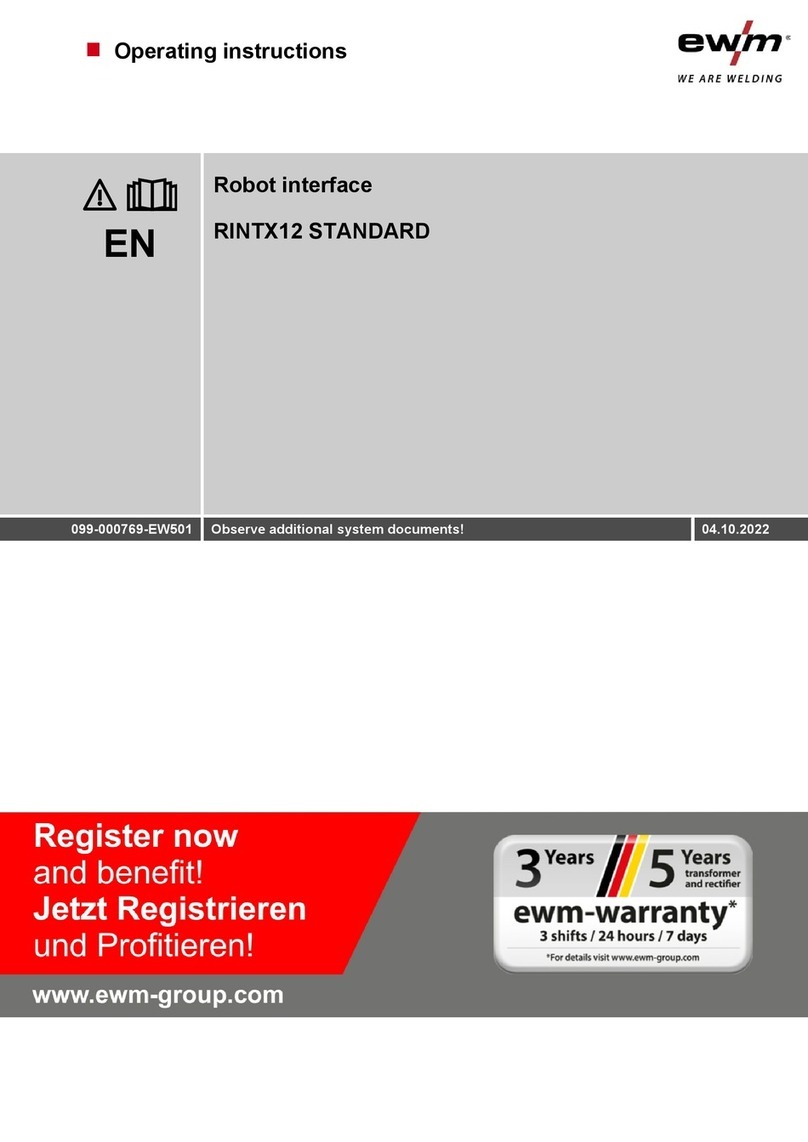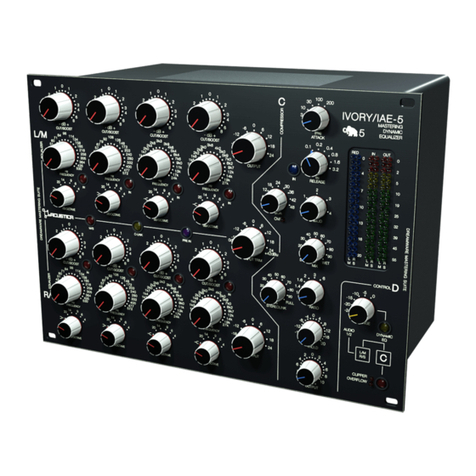CBS laboratories Audimax 4450 Installation and operating instructions

CBS Audimax 4450
Installation, Operation, and Maintenance
CBS Laboratories
Professional Products
Stamford, Connecticut 06905

2
Installation, Operation, and Maintenance Manual
This manual is based on the CBS Laboratories manual, “CBS Audimax Models 4440A, 4450A Au-
tomatic Level Control—Operating and Maintenance Instructions,” produced by the Professional
Products Division, CBS Laboratories, Stamford, Connecticut 06905, August 1972. Copyright CBS
Laboratories, Inc.

3
CBS Audimax 4450A Automatic Level Control
Table of Contents
1 General Description 7
1.1 Introduction 7
1.2 Functional Description 7
1.3 Physical Description 7
1.4 Specifications 8
2 Installation Procedures 9
2.1 Signal Connections 9
3 Operational Setup 11
3.1 Gated Gain Stabilizer 12
3.2 Test Switch 13
3.3 Decay (Recovery) Time Switch 13
4 Principles of Operation 15
4.1 Overall System Operation 15
4.2 Circuit Description 18
4.2.1 Gated Gain Stabilizer 23
4.2.2 Functional Graphs 23
4.2.3 Power Supply 26
4.2.4 Test Switch and Meter 26
4.2.5 Stereophonic Operation 26
4.3 Parts List 27
5 Maintenance and Adjustments 31
5.1 Quick Overall Check 31
5.2 Electrical Alignment Procedure 31
5.3 Troubleshooting Suggestions 32
5.3.1 Input/Output Circuits 33
5.3.2 GGS and Logic Circuits 33
5.4 Measured Performance 34

4
Installation, Operation, and Maintenance Manual
Index of Tables
Table 1.1 Specifications for the Auximax 4450 8
Table 3.1 GGS Threshold Values for R63 and R64 12
Table 3.2 Decay Time Settings 13
Table 4.1a Parts List for the Audimax 4450 Input/Output Board 27
Table 4.1b Parts List for the Audimax 4450 Power Supply/Logic Board 28
Table 4.1c Parts List for the Audimax 4450 Chassis 29

5
CBS Audimax 4450A Automatic Level Control
Index of Figures and Traces
Figure 2.1 Installation guidelines for the Audimax 4450. (Source: CBS Labs.) 10
Figure 3.1 Front panel layout of the Audimax 4450. (Source: CBS Labs.) 12
Figure 4.1 Audimax 4450 overall block diagram. (Source: CBS Labs.) 16
Figure 4.2 Audimax 4450 system interconnections. (Source: CBS Labs.) 17
Figure 4.3 Schematic diagram of the audio input/output board (A1, A3). (Source: CBS Labs.) 19
Figure 4.4 Circuit board layout of the audio input/output board (A1, A3). (Source: CBS Labs.) 20
Figure 4.5 Schematic diagram of the power supply/logic board (A2). (Source: CBS Labs.) 21
Figure 4.6 Circuit board layout of the power supply/logic board (A2). (Source: CBS Labs.) 22
Figure 4.7 Audimax 4450 gain characteristic curves. (Source: CBS Labs.) 24
Trace 5.1 Audimax 4450 frequency response. The left channel is shown in blue, the right channel
is shown in green. 35
Trace 5.2 Audimax 4450 THD+N. The left channel is shown in blue, the right channel is shown in
green. 35
Trace 5.3 Audimax 4450 input/output phase (left channel). 36
Trace 5.4 Audimax 4450 interchannel phase. 36
Trace 5.5 Audimax 4450 crosstalk. The left channel is shown in blue, the right channel is shown
in green. 36

6
Installation, Operation, and Maintenance Manual

7
CBS Audimax 4450 Automatic Level Control
1 General Description
1.1 Introduction
The Audimax 4450A, like the CBS Laboratories Volumax companion unit, is a tool to help the
broadcaster achieve maximum audio program power within appropriate modulation limits.
Designed for use wherever high-quality automatic-gain control is necessary, the 4450 provides a
unique means of audio-signal control for AM, FM, and TV broadcasting, sound recording,
motion-picture sound, and public address systems.
1.2 Functional Description
The Audimax is totally different in concept from ordinary compressors, limiters, or AGC
(automatic gain-control) devices. Two features unique to the Audimax are the gain platform and
the gated gain stabilizer.
The exclusive gain platform principle permits gain to remain on a stable plateau over a wide
range of input levels rather than continuously being allowed to rise and fall with consequent
distortion, thumping and pumping, and audio “holes.” The unique gated gain stabilizer bridges
program lapses and thus eliminates the “swish-up” of background noise. A special return-to-zero
function returns gain to normal during standby conditions.
Both the gain platform and the gated gain stabilizer use logic techniques to make processing
decisions based on the incoming signal. Thus, the Audimax is not just another AGC amplifier, but
a sophisticated processing device that eliminates the drawbacks of conventional units.
The Audimax principles apply not only to radio and television stations, but also are valuable
in recording, public address, background music, and two-way communication systems.
1.3 Physical Description
The Audimax Model 4450A is a slim, neat packages designed for standard rack mounting. The
unit has an illuminated front-panel dB meter and a few simple controls that seldom require
resetting. The overall dimensions are 19 inches wide, approximately 1-3/4 inches high, and
approximately 15-1/2 inches deep. The Model 4450 weighs 9.5 pounds. The unit operates from a
nominal 115 V ac 60 Hz single-phase power source. It requires 30 watts.
Input/output signal connections are made at a pair of connectors on the rear panel. The basic
front-panel controls consist of the following:
• An ac POWER ON–OFF switch.
• INPUT signal-level adjustment potentiometer.
• OUTPUT signal-level adjustment potentiometer.
(Source: CBS Labs.)

8
Installation, Operation, and Maintenance Manual, General Description
• CONTROL ON–OFF switch that permits the Audimax channel (left or right) to be
operated as a linear amplifier when automatic gain control is not desired.
• TEST switch for maintenance checks.
The internal components of the Model 4450A consist of an ac power transformer, two audio
output transformers, and three easily accessible transistor circuit boards. Two of the boards
contain the input, amplification, and output circuitry, and much of the feedback and logic circuitry
used for the left and right audio channels. The third board contains the Audimax dc power supply
and the remainder of the audio feedback and logic circuitry.
1.4 Specifications
Typical specifications for the CBS Audimax 4450 are given in Table 1.1.
Table 1.1 Specifications for the Auximax 4450
Parameter Value
Control characteristic ± 10 dB of gain control
Frequency response ±0.5 dB from 50 Hz to 15 kHz
Harmonic distortion Less than 0.5% from 50 Hz to 15 kHz at + 16 dBm output
Signal-to-noise ratio Greater than 70 dB, with normal gain
Gated gain stabilization Threshold adjustable from –20 dB to normal input
Maximum gain 40 dB
Input and output impedances 600 ohms or 150 ohms, balanced or unbalanced
Minimum input level –25 dBm
Normal output level +16 dBm, sine wave
Maximum output level +26 dBm
Maximum operating temperature +55° C
Physical dimensions Standard 19" rack mounting, 1-3/4" high, 11" deep except for cable and connectors
Power requirements 30 watts at 115 V ac, 60 Hz

9
CBS Audimax 4450 Automatic Level Control
2 Installation Procedures
The Audimax 4450 is designed to be mounted in a standard 19-inch electronic equipment rack or
19-inch-wide console opening. The mounting dimensions are shown in Figure 2.1. Install the unit
in a reasonably well-ventilated position, making sure there is no high-heat producing equipment
located beneath it. The ambient temperature should not exceed 130° F.
For broadcast station applications, it is recommended that the Audimax 4450 be installed in a
studio and its output fed directly into the main audio line. Satisfactory operation requires that the
unit be presented with a constant 600 or 150 Ω impedance throughout the audio band. A 6 dB 600
Ω pad is provided at the output for isolation purposes.
A fast-acting peak limiter is recommended for use at the transmitter (following the Audimax
4450). However, this peak limiter should be set to provide only occasional limiting of 5 to 6 dB.
The Audimax 4450 is equipped with a power transformer that permits the selection of either
115 V or 230 V ac operation. If 230 V operation is required, the following procedure must be
performed:
1) Unsolder and remove the black/white lead from terminal 4 of TB1 (see Figure 7.1). TB1 is the
terminal strip adjacent to the power transformer.
2) Unsolder and remove the brown lead from terminal 3 of TB1.
3) Connect these two leads to terminal 1 of TBl.
4) Unsolder and remove the white lead from terminal 4 of TB1 and connect it to terminal 1 of
TB1.
2.1 Signal Connections
Input and output leads should be soldered to the connector strips at the rear of the chassis. The
connector pin-out is as follows:
• Input (+) = 1
• Input (–) = 2
• Shield = 3
• Ground = 4
• Output (+) = 5
• Output (–) = 6
• Shield = 7
• Ground = 8
Connections are identical for the left and right channels.

10
Installation, Operation, and Maintenance Manual, Installation Procedures
Figure 2.1 Installation guidelines for the Audimax 4450. (Source: CBS Labs.)

11
CBS Audimax 4450 Automatic Level Control
3 Operational Setup
With proper input levels, average program material should cause the front-panel GAIN meter to
indicate approximately 0 dB. (This figure is relative, and does not refer to actual gain of the
amplifier.) In this way, the advantages of ±10 dB of level correction can be realized. See Figure
3.1 for the locations of controls. The audio controls on the left side of the front panel are provided
for the left channel and those on the right side of the front panel are provided for the right channel.
The INPUT level setting may be established by either of two methods:
• Normal programming input to the Audimax 4450:
– Set the POWER switch to the ON position.
– Apply normal program material to the left and right channel inputs.
– Set the left channel CONTROL switch to ON. Set the right channel CONTROL switch
to OFF.
– Adjust the left channel INPUT control as necessary to achieve an average 0 dB
reading.
– Set the left channel CONTROL switch to OFF. Set the right channel CONTROL
switch to ON.
– Adjust the right channel INPUT control as necessary to achieve an average 0 dB
reading.
– Set both the left and right channel CONTROL switches to ON for normal operation.
• Signal generator input to the Audimax 4450.
– Set the POWER switch to the ON position.
– Connect an audio oscillator to the left and right channel inputs. Set the oscillator
output to 1 kHz at 4 dB above the normal VU level of the line in which the Audimax
unit is connected. When an oscillator is connected directly to the Audimax unit, it is
important that proper impedance matching be observed and that no other loads are
present on the line.
– Set the left channel CONTROL switch to ON. Set the right channel CONTROL switch
to OFF.
– Adjust the left channel INPUT control as necessary to achieve a 0 dB reading.
– Set the left channel CONTROL switch to OFF. Set the right channel CONTROL
switch to ON.
– Adjust the right channel INPUT control as necessary to achieve a 0 dB reading.
– Set both the left and right channel CONTROL switches to ON for normal operation.
The OUTPUT level control is continuously variable over a 30 dB range to provide for a
maximum of 8 VU with normal program input. With both CONTROL switches ON, adjust the
left and right OUTPUT controls as needed to produce the desired output levels.
With proper levels out of the audio console, the Audimax 4450 can operate without additional
adjustment on the part of the operator.
A cautionary note is appropriate with regard to intentional “fades” in program material. Since
the Audimax will defeat any slow, deliberate reduction of level, fade operations should be
performed more rapidly than in the past. A little practice will easily result in the required skill.

12
Installation, Operation, and Maintenance Manual, Operational Setup
3.1 Gated Gain Stabilizer
The function of the Audimax Gated Gain Stabilizer (GGS) is to answer the following question:
Should the gain be increased when a lapse occurs in the audio program? This is especially
important for television and motion pictures where the lapses occur quite often. To prevent level
increases of system noise or audio signals that are clearly background effects, the GGS inhibits
gain “recovery” during those intervals when the input level drops below a preset threshold.
The GGS threshold has been factory set to inhibit gain increase when the incoming-signal
level has dropped approximately 14 dB below the normal line level. This figure has been
established after extensive field experience, and represents a satisfactory value for typical
broadcast use. For special applications, the GGS threshold may be moved upwards towards
normal program level by increasing the resistance values of R63 and R64 on the input/output
boards (Al and A3). Or, the threshold may be lowered by reducing the values of these resistors.
Table 3.1 lists suggested values.
Sine-wave verification of the GGS threshold level may be obtained by the following
procedure:
1) Apply a 1 kHz sine wave input at a level sufficient to cause the front panel meter to read 0
dB gain reduction.
2) Remove the signal and wait at least 15 seconds for full stabilization.
3) Re-apply the input signal at a level well below the desired threshold and lowly increase the
signal level until the front panel meter just begins to deflect toward the right. The input level
Table 3.1 GGS Threshold Values for R63 and R64
GGS Threshold Value of R63 and R64
–4 dB 560 ohms
–8 dB 300 ohms
–11 dB 130 ohms
–14 dB 100 ohms
–17 dB 56 ohms
Figure 3.1 Front panel layout of the Audimax 4450. (Source: CBS Labs.)

13
CBS Audimax 4450 Automatic Level Control
at this point should be approximately 5 dB less than indicated in Table 3.1 for the chosen
values of R63 and R64. This 5 dB difference is a special factor that must be considered when
sine wave calibration of the GGS threshold is performed.
3.2 Test Switch
For normal operation of the Audimax 4450, the TEST switch is placed in the OFF position.
Turning the TEST switch to the TEST position causes the gain to remain fixed at the mid point of
the control range. The function of the TEST position is to facilitate overall system performance
measurements.
3.3 Decay (Recovery) Time Switch
The gain control action of the Audimax 4450 has been designed to provide a precise degree of
control with a minimum of noticeable change in the short-term dynamic range. As a tool for the
broadcaster, the unit provides maximum modulation consistent with artistically acceptable
performance for a wide variety of program material. In some applications, however, it is practical
and desirable to impose more limitation on the dynamic range of the program material. This is
commonly done for the purpose of achieving higher average modulation, or more uniform sound,
as in the case of a public address system. Additional limiting may be achieved by decreasing the
Audimax recovery time.
Although the total gain-increasing action of the Audimax 4450 is a complex function of many
variables, one phase of the recovery characteristic may be modified by changing the ohmic value
of the gated recovery resistance. By decreasing this value, the speed of recovery is increased.
The ohmic value of the gated recovery resistance can be varied through the use of the internal
DECAY TIME switch located on the power supply and logic board (A2). While selection of the
most appropriate recovery time is left to the discretion of the user, Table 3.2 lists general
preferences based on programming format.
Table 3.2 Decay Time Settings
Format Recovery Time
Mixed Slow (10 megohms)
Talk Medium (4 megohms)
Top-40 Fast (3 megohms)

14
Installation, Operation, and Maintenance Manual, Operational Setup

15
CBS Audimax 4450 Automatic Level Control
4 Principles of Operation
An overall block diagram of the Audimax 4450 is shown in Figure 4.1. The monaural model
(4440) consists of the same input/output, feedback, and logic circuits, but without an input/output
board for the right channel.
4.1 Overall System Operation
Internal interconnections of the Audimax 4450 are shown in Figure 4.2. Three circuit boards are
used:
•A1, left channel audio input/output (see Figure 4.3 and Figure 4.4)
•A2, power supply and logic circuits (see Figure 4.5 and Figure 4.6)
•A3, right channel audio input/output (this board is identical to A1)
Transistors A1Q1 through A1Q15 along with input and output attenuators A1R4, A1R31, and
output transformer T2 comprise a high quality audio amplifier with push-pull (balanced) design
throughout. Diodes A1CR1 and A1CR2 form a Variolosser (variable loss device) whose
attenuation changes as a function of the control voltage that it receives from A2Q4. Thus, the
overall system gain becomes a function of output level, as determined by rectifiers 1 and 2, and
the input level as determined by rectifier 3. (See Figure 4.1.) Each of the three rectifiers is
appropriately weighted with respect to charge and discharge time constants to handle speech and
music most effectively. For example, rectifier 2 is weighted to permit a more rapid discharge
following a short impulsive signal—excessive with respect to average program level—than if
there were merely an ordinary shift in average level.
The attack time of the Audimax circuitry (i.e., the time required to effect a gain reduction
when the signal level rises suddenly) is approximately 10 milliseconds and is determined by the
charging time of the rectifier 1 capacitor in the memory unit. The recovery time (i.e., the time
required to effect a gain increase when the signal level drops) is a function of several variables, as
discussed below.
The Audimax 4450 utilizes a “platform” concept. This means that instead of a recovery action
wherein the control voltage tends to follow the amplitude of the audio signal, peaks in the audio
signal cause the gain to be set at an appropriate level and a reduction of signal amplitude from
these peaks over a suitable range is accommodated without gain change unless there is a change
in the average level. When an increase in gain does become necessary, this change is effected in a
length of time determined by the resistance selected with the DECAY TIME switch, A2S1, which
has three positions:
•S (slow)
•M (medium)
•F (fast)
The gated gain stabilization (GGS) feature of the Audimax allows discharge at the main
storage capacitor in the memory unit of A2Z1 through the recovery resistor A2R9 (medium), A2R11
(slow), or A2R13 (fast). This provides for a slow upward drift, toward “platforms” of higher gain,
only during the time when the program signal level exceeds the GGS threshold.
The GGS voltage, derived from rectifier 3, supplies a third input for the recovery AND gate
(Figure 4.1). If this voltage is positive, the normal recovery mode is in effect. However, during a
lapse of audio, the AND input drops to about –4 volts, inhibiting the recovery gate and electrically

16
Installation, Operation, and Maintenance Manual, Principles of Operation
Figure 4.1 Audimax 4450 overall block diagram. (Source: CBS Labs.)

17
CBS Audimax 4450 Automatic Level Control
Figure 4.2 Audimax 4450 system interconnections. (Source: CBS Labs.)

18
Installation, Operation, and Maintenance Manual, Principles of Operation
opening the discharge path for the storage capacitor. In this way, gain is held constant during
pauses until the GGS voltage again becomes positive.
The gentle action provided by the selected recovery resistor is especially useful in improving
average modulation levels. This action is independent of the normal Audimax gain-riding
functions, and is completely unobjectionable with normal programming. If it is deemed desirable
to speed-up or slow-down this aspect of the recovery characteristics, the resistance value of A2R13
may be decreased or that of A2R11 may be increased, respectively. The GGS voltage also drives a
time-delay return-to-zero circuit that is coupled to the control voltage bus (gate of A2Q4) by an
OR circuit. If the audio program should lapse for more than 10 seconds, and if the system gain is
greater than 0 dB, the gain will automatically return to 0 dB. Or, if the audio program should lapse
for more than 20 seconds and the system gain is less than 0 dB, the gain will, similarly, return to 0
dB. These return-to-zero functions place the Audimax 4450 in a proper standby condition for the
reappearance of audio signals after a program pause.
4.2 Circuit Description
The left and right channel circuit boards (A1 and A3, respectively) are identical; the following
discussion applies to both boards. The schematic diagram of the audio input/output board is given
in Figure 4.3; the circuit board layout is shown in Figure 4.4. The schematic diagram of the power
supply/logic board (A2) is given in Figure 4.5; the circuit board layout is shown in Figure 4.6.
The audio input signal is applied through input attenuator A1R1 through A1R5 and coupling
capacitors A1C1 and A1C2 to the bases of the push-pull (differential) amplifier formed by A1Q2
and A1Q3. Transistor A1Q1 is used as a constant-current source to bias the stage. Matched diodes
A1CR1 and A1CR2 form the Variolosser element before the next stage of gain, provided by A1Q5
and A1Q6. The Variolosser diodes effect a variable shunt impedance on the audio path, controlled
via A2R30 by the voltage from the source-follower A2Q4. Thus, amplifier gain varies as a function
of control voltage. Transistors A1Q7 and A1Q8 are connected as emitter-followers to provide a low
driving impedance for the output and logic circuits.
The output stage consists of 600 Ω output transformer T2 driven by a class-A push-pull
amplifier consisting of A1Q14 and A1Q15, which are driven by balanced emitter-followers A1Q12
and A1Q13. The output level is adjusted with A1R31. The balanced gain stage consisting of A1Q10
and A1Q11 is used to compensate for the insertion loss of attenuator network A1R29 through
A1R31.
The feedback control logic circuits, which follow the three rectifiers, are driven through OR
gates permitting either one or two audio channels to act as the source(s) of the drive signals.
Similarly, a feedback signal is available from each end of AGC potentiometer A2R30 at the output
of these logic circuits. Thus, the logic circuits (on board A2) are capable of monaural or stereo
service.
For maximum efficiency and sensitivity to both positive and negative peaks, each side of each
balanced channel is amplified with respect to ground and these two outputs drive the rectifiers.
Rectifier 1 consists of two voltage doublers, A1CR5 and A1CR6, which are biased at +12 V dc.
Rectifier 2 consists of two more voltage-doublers, A1CR9 and A1CR10, which are biased at +6
volts.
The program audio signal is rectified by rectifier 1 and the negative voltage thus generated is
applied through A2R10 to the main storage capacitor. This point is connected to the gate of FET
source-follower A2Q4, which has negligible loading effect on the storage capacitor and also serves

19
CBS Audimax 4450 Automatic Level Control
Figure 4.3 Schematic diagram of the audio input/output board (A1, A3). (Source: CBS Labs.)

20
Installation, Operation, and Maintenance Manual, Principles of Operation
Figure 4.4 Circuit board layout of the audio input/output board (A1, A3). (Source: CBS Labs.)
Table of contents
Other CBS laboratories Recording Equipment manuals



